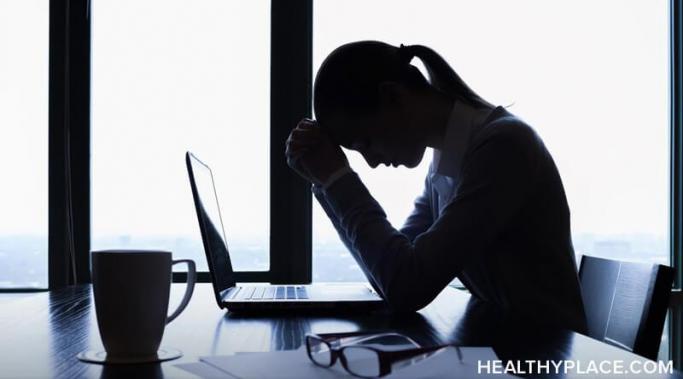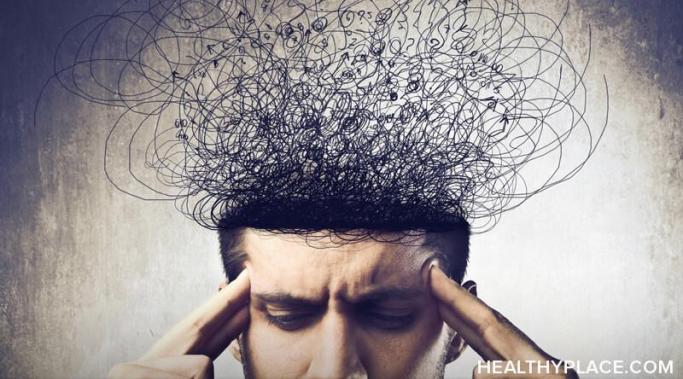Accepting my functional limitations of anxiety is challenging. In a previous post, I challenged readers to participate in a simple exercise: if someone tells you they have anxiety, imagine they’ve lost a leg. I introduced this scenario specifically for the benefit of those without anxiety – if they can frame mental health issues in terms of physical ailments, then perhaps they can learn to become more empathetic to the mentally ill. I want to reintroduce that exercise, but this time direct it towards people with anxiety, as I think it can be useful in dealing with a serious problem: accepting your functional limitations with anxiety.
Anxiety Management – Anxiety Schmanxiety
I try to visit my childhood home, my peaceful sanctuary, at least once every few weeks. I’ve fallen behind on those visits recently, due to working through the logistics of my anxiety-provoking move. With the move out of the way, last weekend I was able to visit my peaceful sanctuary for the first time in nearly two months.
It seems that being anxious is the new normal. Statistics compiled by organizations like Child Mind Institute and the National Institute of Mental Health illuminate how extensive the anxiety problem is: In the US alone, tens of millions of children, teens, and adults experience an anxiety disorder. That doesn't even include the staggering number of people who struggle with anxiety but don't have a diagnosable anxiety disorder. Life is stressful, busy, and often filled with negativity. It is now "normal" to be anxious. But you don't have to accept this. It's possible to take back your real normal.
Cats help mental health. Not just my mental health (I deal with anxiety), but cats can help anyone's mental health.
Treating the pain of anxiety and headaches is increasingly possible now that medical and mental health professionals are beginning to understand the very real connection between anxiety and headaches. In the past, doctors treated anxiety and headaches as two separate conditions. People who lived with both of these uncomfortable illnesses often failed to get true relief. Now that people are beginning to uncover the connection between the two, treating the pain of anxiety and headaches is possible. You can improve not just anxiety and headaches but the overall quality of your life.
Exercise, even light exercise, can lower anxiety. Exercise has been shown to affect change in the brain that impacts anxiety immediately as well as over time. If you experience physical limitations that make exercising difficult, you can still move in ways that allow you to reduce anxiety and increase mental health and wellbeing.
Social media anxiety is real. Claims of social media being bad for us have long passed into common parlance, but as it turns out, such claims actually have a basis in fact. Research proves that heavy social media usage can wreak havoc on one’s mental health – not only is it linked to anxiety, but also depression, loneliness, paranoia, and even attention-deficit/hyperactivity disorder (ADHD). For those of us already prone to anxiety, such demands we take an active role in regulating our social media usage. Though seemingly difficult, here are some ways to avoid social media anxiety.
Knowing how to make moving less stressful can make the difference between a touch of anxiety and an overwhelming amount of anxiety. Moving is a logistical nightmare. Finding a new place, getting all your stuff packed, hauling it out to your moving van –- it’s enough to drive any person to the brink of insanity. But for those of us with anxiety, it can be a seemingly impossible task.
You can understand mental illness more fully by reading great literature. Regular readers of this blog may have seen the video where I examined a poem by William Wordsworth and applied its wisdom to living with anxiety. I'm a former English major, and I firmly believe literature to be one of the most valuable tools we can use to come to terms with the challenges of life, mental illness included. Because this may seem foreign to many readers, I want to use this time to argue why you can understand mental illness better by reading literature.
By honing anxiety strategies for getting though your day in peace, you can experience calm rather than anxiety. Imagine living a full day, day after day, without being plagued by anxious thoughts, without experiencing the physical symptoms of anxiety that bog you down with misery. This life is possible and in reach of everyone, including you no matter how intense your anxiety currently is. Perhaps surprisingly, a way to do this isn't about battling your anxious thoughts all day. That's exhausting and keeps you focused, and thus stuck in, anxiety. Anxiety strategies for getting through your day in peace involve not struggling to change your anxious thoughts but to induce a sense of calm throughout your day.









